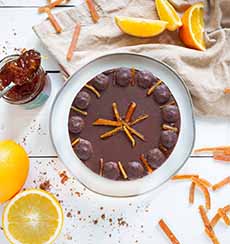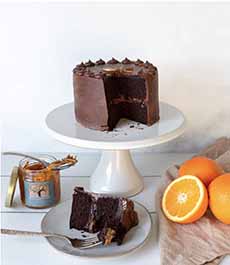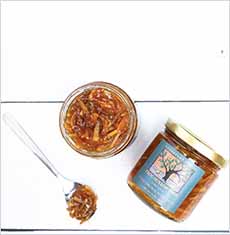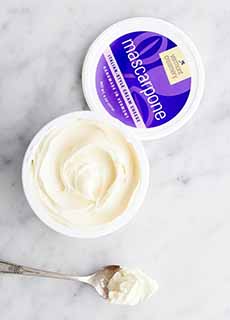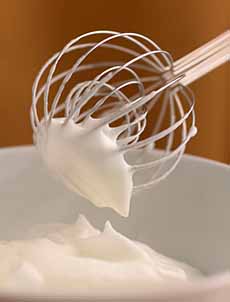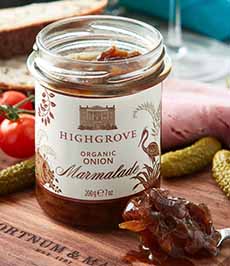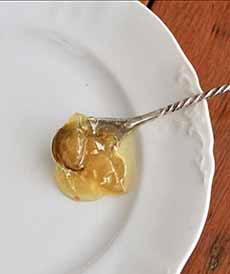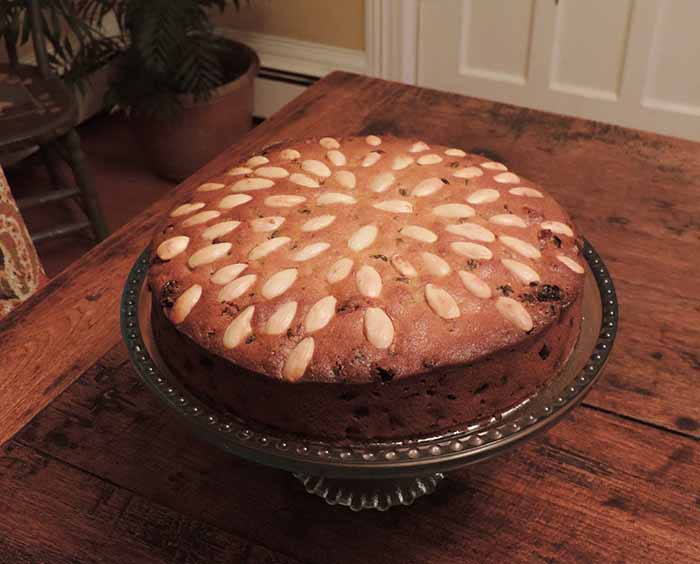Chocolate Orange Marmalade Cake For New Year’s Eve & Beyond
|
|
Look closely and this Chocolate Orange Marmalade Cake can stand in for the clock, counting down to midnight. So as fans of Frog Hollow Farm, we ordered one to usher in the new year. From Chef Becky of Frog Hollow Farm (one of our favorite purveyors of California organic fruit), this rich, velvety Chocolate Orange Marmalade Cake marries quality dark chocolate and sweet navel oranges. The cake itself is Blackout Cake, a moist dark chocolate layer cake. This recipe adds coffee to enhance the flavor of the chocolate and separates the layers with Frog Hollow Farm’s popular Organic Navel Orange Marmalade. The cake is frosted with chocolate ganache, made with 66% dark organic Guittard chocolate. If you love the combination of chocolate and orange (we do—it’s a match made in heaven), this cake is a dream. —Karen Hochman The cake is available year-round, waiting for your next special occasion. For an optional garnish, try barely sweetened whipped cream with splash of orange liqueur or grated orange peel, or mascarpone. > The history of marmalade follows. > Beverage pairings for this cake are also below. > Cake and wine pairings for other cakes. > More cake and wine pairings. Marmalade is a member of the sweet spread family that also includes chutney, conserve, curd, jam, jelly, preserves, and related items (check out the differences here). Marmalade differs from the other spreads in that it not only includes chunks of fruit, but also strips of the fruit’s rinds. The name comes from the Portuguese word marmelo, which is the word for quince. That’s because the original marmalade was made with quince. In fact, quince marmalade was made as far back as the 14th century in Portugal and Spain. But because quinces are bitter and required a lot of expensive sugar to sweeten, oranges and other fruits took over center stage—although the name marmelo stuck. You can still find the occasional jar of quince marmalade if you search online—although quince jam and jelly are far more available. When citrus fruits from warm climates became more available in the 17th century, they entered Britain’s repertoire of fruit spreads. A Scottish recipe for orange marmalade appears in “Mrs McLintoch’s Receipts (sic)” of 1736 [source]. In the 1760s, Scotsman John Keiller opened a confectionery shop selling biscuits, cakes, jams, jellies, and sweets on Seagate, a street in Dundee. Here begins the commercial rise of Britain’s orange marmalade. In 1762 he married Janet Matheson and she ran the shop producing many of the goods herself—in addition to bearing eight children [source]. In 1797, it seems, John Keiller was on the docks of Dundee Harbor where a ship from Seville had taken shelter from a storm with a cargo of oranges. At the time Seville oranges were used medicinally—the peel was thought to aid digestion. But the variety was too bitter to consume as fresh fruit, and the lot proved to be a hard sell. Keiller purchased them for a bargain price [source]. Janet thought it would be worth trying to make marmalade. Putting her own spin on it, she added thin strips of orange peel (called chips). She sold her innovation as chip marmalade (subsequently also called peel marmalade and shred marmalade). She also changed the consistency of her marmalade, from a solid form (think membrillo) to a tender consistency, enabling it to be spread on toast. Thus Dundee marmalade* was born. It developed a considerable following, so the Keillers opened a factory to produce their marmalade. With clever marketing touting that the chips of skin assisted with digestion—and thus Keiller’s was healthier than other breakfast spreads—Keiller’s Marmalade sales took offe. Janet Keiller also used her marmalade to create Dundee Cake†, a type of fruitcake (photo #11, below). By the end of the 1800s, Keiller’s Marmalade was being shipped throughout the British Empire. Keiller’s Dundee Orange Marmalade was one of the first brands to be formally registered in the U.K., in 1876. Here’s more about the history of Keiller’s Marmalade. It became one of the most popular toast spreads in the country: a cultural icon and part of British culinary heritage. Here’s more Keiller history from the BBC. While marmalade is traditionally made from citrus fruits—bergamot, blood orange, navel, and Seville orange; grapefruit; kumquat; lemons and Meyer lemons; and mandarins. It also can be: |
|
|
________________ *Dundee orange marmalade is a recipe made from Seville oranges, lemon juice, and orange juice. The particular recipe originated in Dundee, Scotland. †Dundee cake is a traditional Scottish fruitcake made with currants, Dundee marmalade, ground almonds, lemon zest and orange zest, raisins, nutmeg, sultanas (golden raisins), and typical cake ingredients such as baking powder, butter, eggs, flour, milk, and sugar. Some recipes add the more familiar candieds fruit, such as candied citrus peel and glacé cherries. The cake is topped with concentric circles of blanched almonds (photo #11). Dundee Cake was purportedly a favorite of Queen Elizabeth II who enjoyed it with her tea, and Winston Churchill. ‡Tomato is actually a fruit, and can easily be made into a sweet marmalade. However, savory spices and herbs can turn it into a savory marmalade—a delicious condiment as well as a spread. CHECK OUT WHAT’S HAPPENING ON OUR HOME PAGE, THENIBBLE.COM.
|
||
